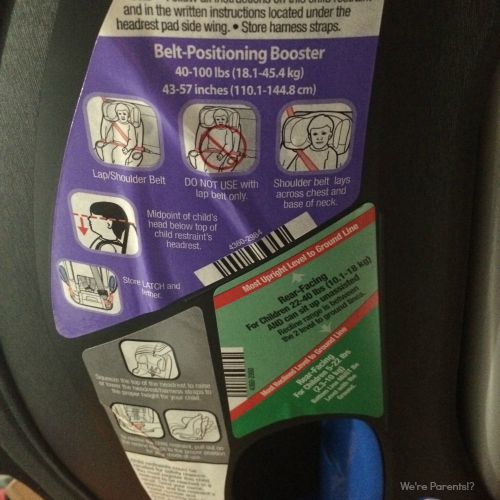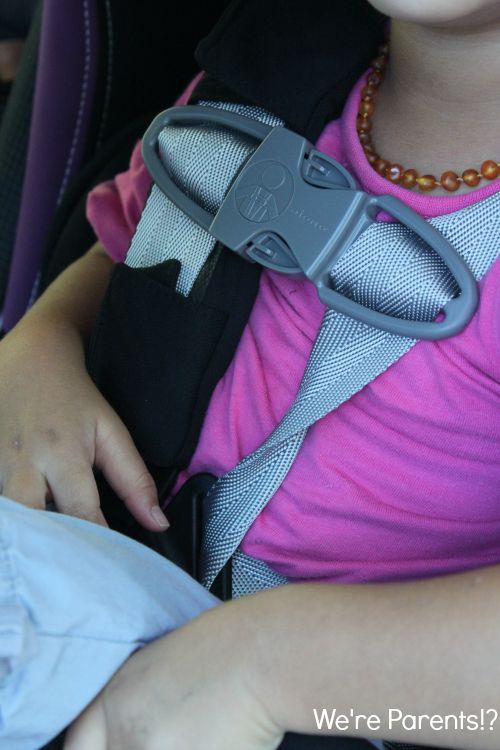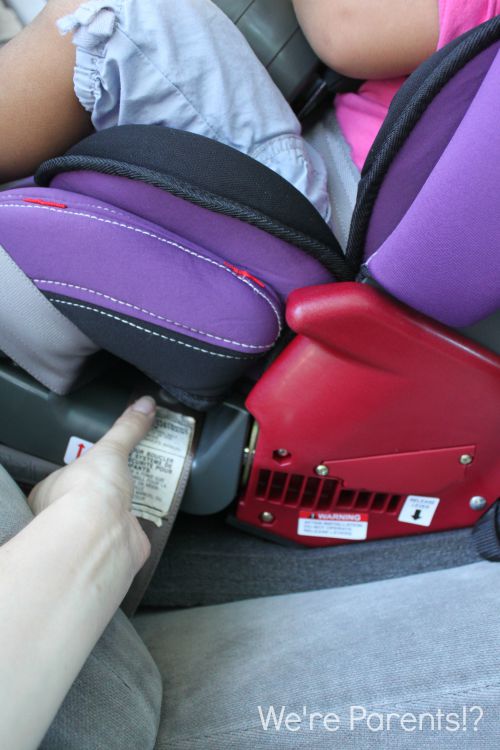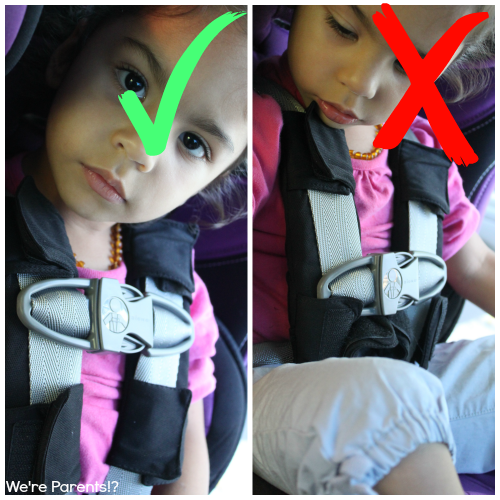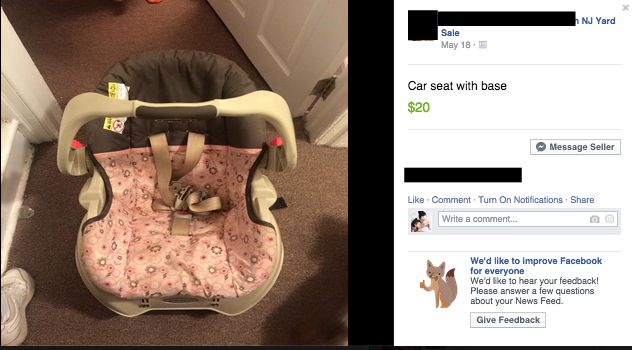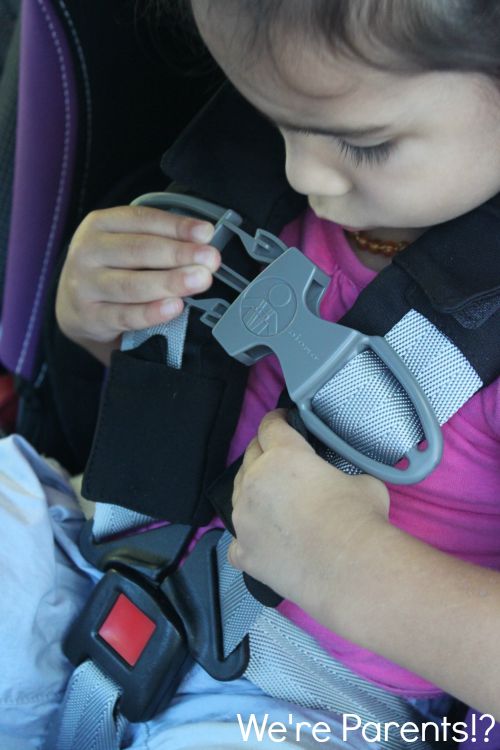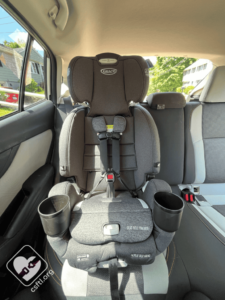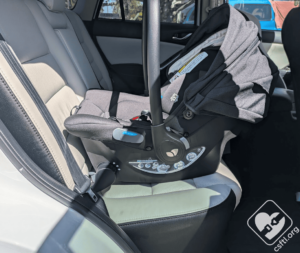20 Common Car Seat Safety Mistakes
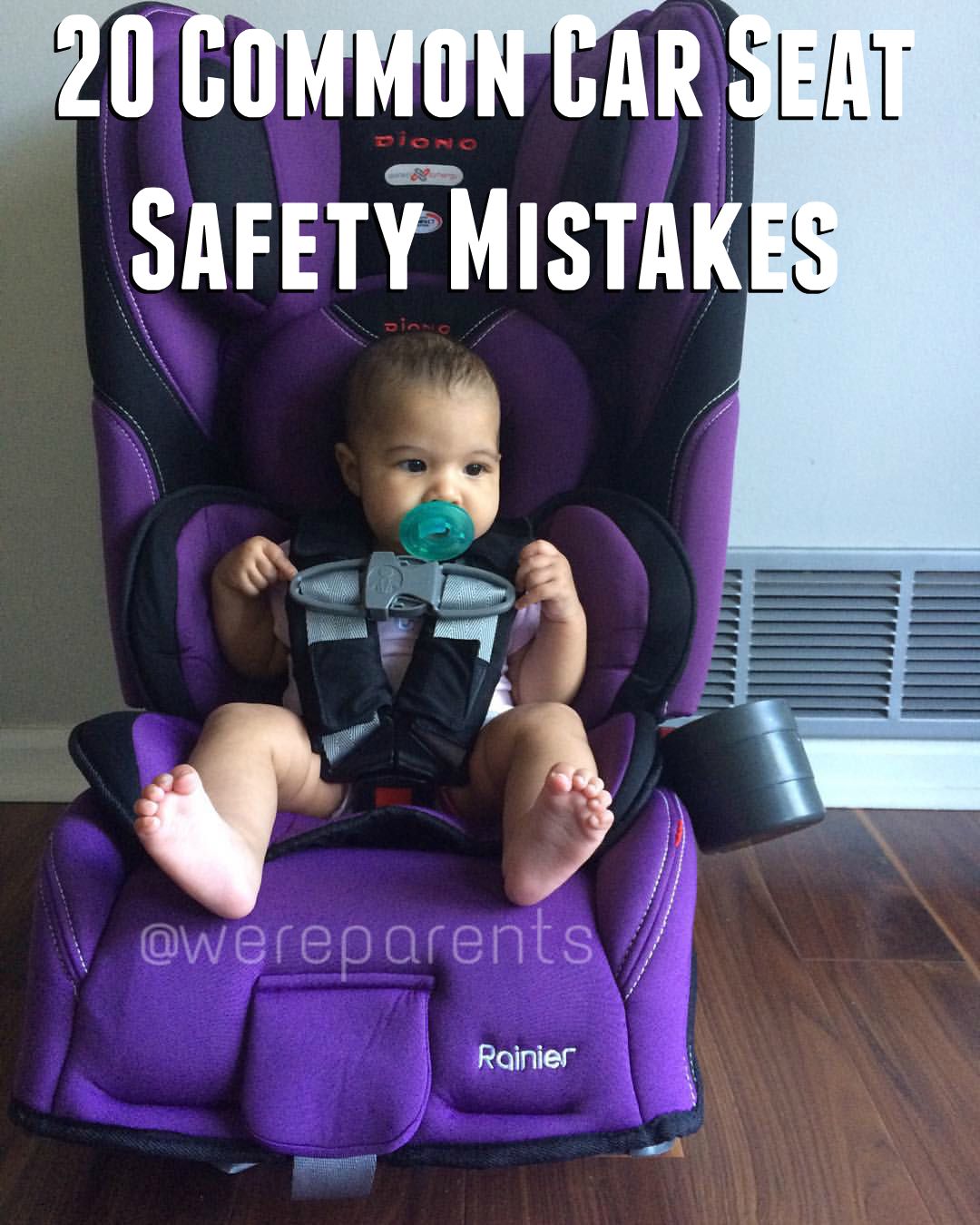
This post contains affiliate links and was done in partnership with Diono
Every 33 seconds a child under 13 is involved in a car accident*. THIRTY-THREE SECONDS. By the time is takes you to fully read through this post, that’s at least NINE children under 13 that were in a car accident. It’s the leading cause of death for children under 13. Yet in still, no one thinks it will happen to them. Car Seat Safety is unfortunately one of those hot button topics. Why? I really have no clue. I know if I was doing something that was dangerous to my girls, I would truly hope that someone would tell me. (*Read 15 Things We Didn’t Know About Car Seat Safety Before Having Kids) Yet, time and time again, I see people becoming furious when told that they are not properly using car seats. The number one thing I see is, “This is so stupid, we didn’t even have car seats growing up.”
And they’re right.
We barely did and even if we did, our parents weren’t adamant about making sure we were secured 100% of the time. However, a lot has changed since then. More people driving. More drivers distracted (HELLO, we didn’t have cellphones either growing up!). And most importantly, more research has been done to prove that properly secured children and simply safer.
I’m determined to help more and more families not be a statistic, however, three out of four car seats are used incorrectly, so there’s a lot of work to be done. Here’s 20 common mistakes parents are making:
1. Not reading your car seat manual. This document is a huge wealth of information. It explains the height and weight limits of your seat, when you can use in rearfacing, forwardfacing, or booster modes depending on your seat, and a ton of other dos and don’ts that you should be well versed in BEFORE using your seat. Each seat has it’s own set of instructions, so it’s vital that you read the manual for each seat that you use and don’t assume you can do the same things from seat to seat.
2. Not following your vehicles’ manual relating to car seats. Additionally, each vehicle has it’s own set of rules when it comes to car seats. My vehicle, for example, doesn’t allow car seats to brace on the front seats of the car. There has to be at least a paper thin gap in between the car seat and front seat. Other vehicle’s may have guidelines relating to Latch or anchors, and where you can install a car seat based on the set up of the vehicle.
3. Not registering your child’s car seat. This may not seem like a huge deal, but it is. Car seats are frequently recalled for a wide range of reasons. Sometimes it’s just a piece needs changed and other times the entire car seat is not deemed safe and must immediately stop being used. It’s important that your seat is registered so that the manufacturer can quickly get in touch with you instead of hoping that you hear about the recall.
4. Not paying attention to weight and/or height limits for infant inserts and for seat modes. THIS IS A BIG ONE. Every seat is safety tested and approved for specific use. Anything outside of that use can void the warranty of the seat and make your child in a dangerous position in the event of an accident. Many car seats require you to take out the infant inserts at 11lbs, while seats like the Diono Rainier allow you to use the head insert for one year and the body insert until you deem necessary to remove or turn forward facing. Additionally, it’s important that once your child hits the weight or height limit for their seat that they are turned around forward facing, or if forward facing already and reach the limit that they are moved to a belt positioning booster. They should be in each seat until the maximums are reached if possible. For example – Our Diono Rainier allows for a 50lb or 44″ limit for Rearfacing and Skibbles will remain rearfacing until that limit is reached.
5. Turning forward facing too soon. There are no car seats on the market that allow forward facing before one year old AND 20 pounds. The AAP recommends remaining rearfacing for a minimum of two years old. (Here’s 7 Extended Rear Facing Myths Busted!) New Jersey has laws now requiring rearfacing for a minimum of two years. Oklahoma and California’s same law will go into effective November 2015 and 2017, respectfully. While many other states have bills in the process of being passed. Here’s 4 car seats that are under $100 that will allow you to rearface until 2 years old. Ideally, you wait until your child has reached the maximum for weight or height and then turn then, which is closer to four years old.
6. Using seats after an accident. Again, this varies depending on your car seat’s manufacturer and the accident. Diono, for example, is replace after any accident; whereas, a company like Britax allows minor accidents and follows a protocol that they will discuss over the phone with you to see if your seat needs replaced. The reasoning behind this is that even in a small fender bender, you are unaware if any mechanisms inside the seat have loosened or broken, making the car seat no longer safe and up to code.
7. Using non-approved after market products with the seat. Soft and cuddly shoulder strap covers. Warm fleece bunting that goes under your little one. Mats that go under your car seat to protect your vehicle’s leather. Head positioning pillows. STOP. Nothing. I repeat nothing that is not approved by the manufacture is safe or compatible with your seat. It actually voids your warranty and places your child at risk because none of these products have been safety tested with your car seat. In fact, many of the products haven’t been safety tested with any car seats.
See that photo above? That’s our toddler when she was a baby. With an after market product because I thought it was pretty and I didn’t know better. I’m not writing this post to say I’m better than anyone. We live and learn from our mistakes and when we know better, we do better.
8. Not passing the pinch test. It’s simple. The harness straps should be tight enough that you are not able to grab excess material between your fingers and pinch it. If you can do this then the straps are too loose and will not protect adequately during an accident.
9. Twisting straps. It’s the common theme in this post, but car seats are safety tested according to standards. If any of those standards are not met, it reduces the chance of the car seat being a life saving device. If any of the straps used to secured your seat and/or child are twisted, they are not performing 100% correctly. (This includes harness straps, seat belts, both used in belt positioning boosters and used to secured a car seat, and anchor straps.)
Photo Credit: Diono manual
10. Harness straps coming from incorrect position. If your child is rearfacing the straps should be coming from BELOW their shoulders. If forward facing, the straps should be coming from above.
11. Testing for movement of car seat incorrectly. I see many people say they can’t get a secure fit on their seat. I was one of them for awhile. Confused that the top of the seat would move or not. You want less than 1″ movement side to side or front to back. You check this by using your NON-dominant hand and check ONLY at the belt path with as much firmness as you would use for a firm handshake.
12. Not cleaning it according to manual. You cannot use solvents, abrasive cleaners, etc., on your car seats. Every manufacturer is different on what is allowed so it’s important that you, again, read your manual so you know what’s allowed or not. Often you cannot submerge the parts in water and covers cannot be washed in hot water.
13. Using seat after expiration date. Yes, car seats do expire. No, it’s not so car seat manufacturers can make more money off of you. Diono seats last 8 years harnessed or 12 years using just the seat belt. That’s long enough to only need one seat the entire duration of your child’s car seat needs. Because of the extreme weather conditions inside a vehicle that a car seat is subjected too, the plastic, and other material tends to break down. Additionally, if you are constantly changing the seats in and out of different vehicles, you are putting wear and tear on the seats.
14. Bulky winter clothes. You may think I’m nuts, but no bulky coats in the car. There are other ways to keep your kids warm, like the car seat poncho you see in the picture above. It goes on AFTER that child is buckled into the seat. Let’s talk about why. If you put your child in a bulky jacket, then adjust the harness straps, then remove the jacket, you will not be able to pass the pinch test. If you are in an accident, the bulky coat compresses sending your child slamming into the straps at the full force of the impact.
15. Never on top of a cart. I wish sometimes I was one of those brave people that could walk up to anyone and strike a conversation without coming off condescending and well-intentioned like I am. Unfortunately, I can’t. I see so many people in grocery stores with their children on top of the cart. NO, I repeat NO, car seats are designed to do this. Even if your car seat “clicks” into the cart, it doesn’t mean it was designed too. Actually, doing this, can ruin the clicking mechanism that makes the car seat securely fit into the base.
16. Letting someone else install your seat. This may sound silly, but I see a lot of people saying that they can’t figure out how to install their seat so they just let someone at the police station (or somewhere else) install it for them. PLEASE don’t do this. For starters, unless you’ve verified, that person at the police or fire station, while having good intentions, may not be an actual car seat safety technician. Meaning, they are not up to date on the latest information and may be giving you the wrong information about your seat. Secondly, and more importantly, if someone else installs your seat for you, you still have no idea how to properly install a seat. What happens if you need to quickly move your seat to another car or have to install it because you need to clean it because your kid got sick in the car. A properly trained car seat safety tech is taught to show YOU how to correctly install your seats, not do it for you.
17. Not placing the chest clip on the chest. Seems simple enough right? So many people are seen with the clip at the belly though. This is extremely dangerous. The top of the chest clip should be aligned at arm pit level. If at the belly, and in a serious accident, the force of the crash could cause internal injuries when the clip goes into the stomach. Additionally, if at the belly and the straps are too loose, the child could be ejected from the seat.
18. Buying a used car seat that you don’t know the history of. Sure, it sounds like a steal! You can find some amazing prices. I just looked on my local yard sale site and found an infant base and seat for just $20. That’s so much cheaper than at the store. But! STOP. You don’t know anything about the history. You don’t know if it’s been in an accident, how it’s been stored, if non-approved methods were used for cleaning, etc. It’s not worth the risk of your child’s life to safe a few bucks.
19. Not checking after letting your child buckle themselves in. There’s going to come a time (for us it was a little over 2.5 years old) that your child is going to want to start helping buckling themselves in or do it all by themselves. This is great to help teach independence and motor skills; however, you should always double check afterwards to make sure that they did it correctly and that all pieces are where they are supposed to be.
20. Not wearing your seat belt or requiring other adults to wear theirs, especially if in the back seat. Everyone should be wearing a seat belt, simply to protect everyone in the car; however, it’s more important than just that. Everything that is not secured in the car can become a projectile that is magnified depending on the speed the vehicle is going at the time of the crash. Did you know that a 120lb adult if not secured in a 15mph accident becomes an 1,800 pound force against whatever it hits. If the adult is in the backseat and gets thrown up and over onto a child, that’s 1800 pounds coming down on a child.
While this isn’t an all-inclusive list of all mistakes that we could be making with our car seats it is a great list to make sure you are following. All our children have the right to be protected and secured since they can’t advocate for themselves. Please, if you see someone (including me) making a car seat mistake, gently speak up for the child.
*Every 33 seconds according to a 2013 NHTSA report.

